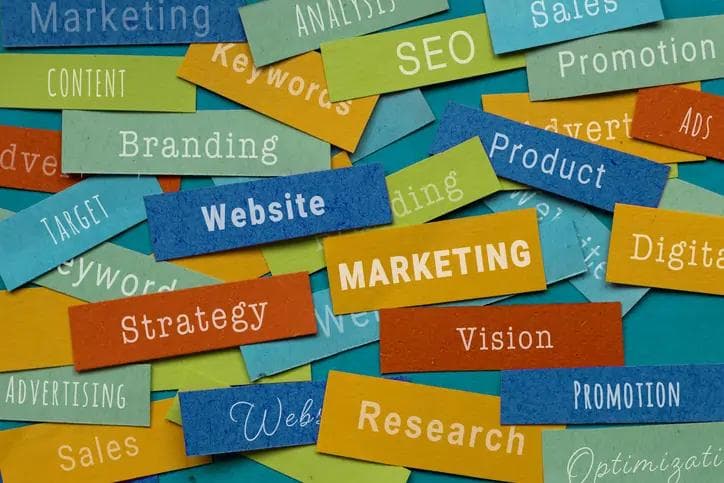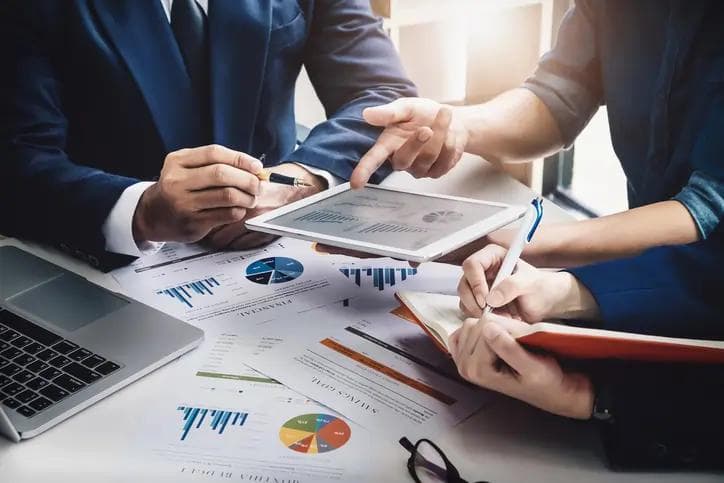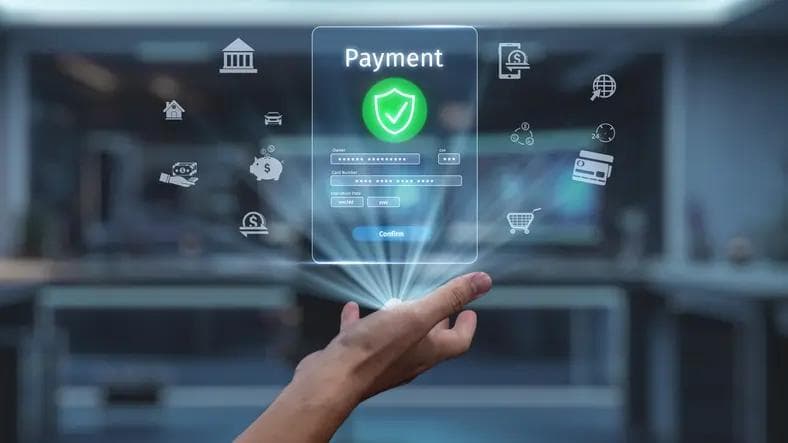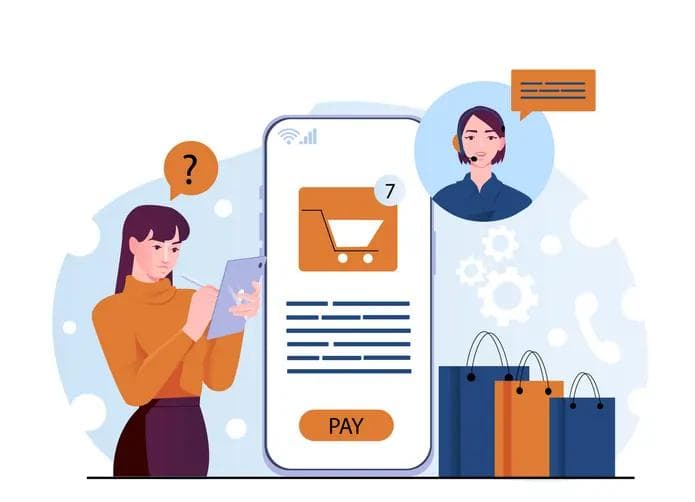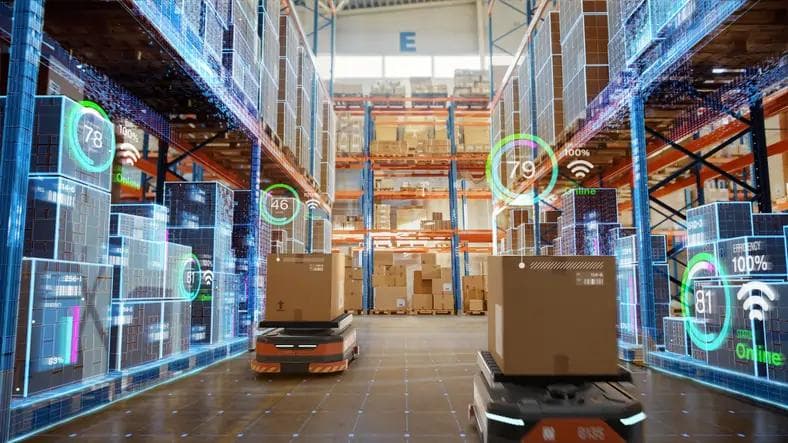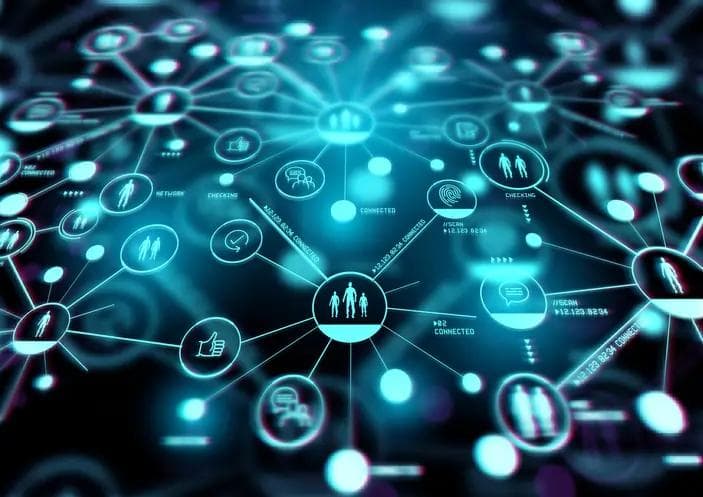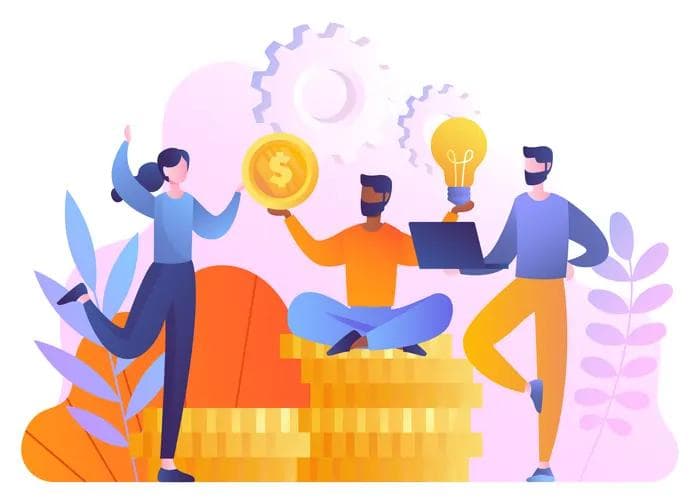Procurement as a Catalyst for Innovation
Procurement as a Catalyst for Innovation
Published by Jessica Weisman-Pitts
Posted on April 22, 2025
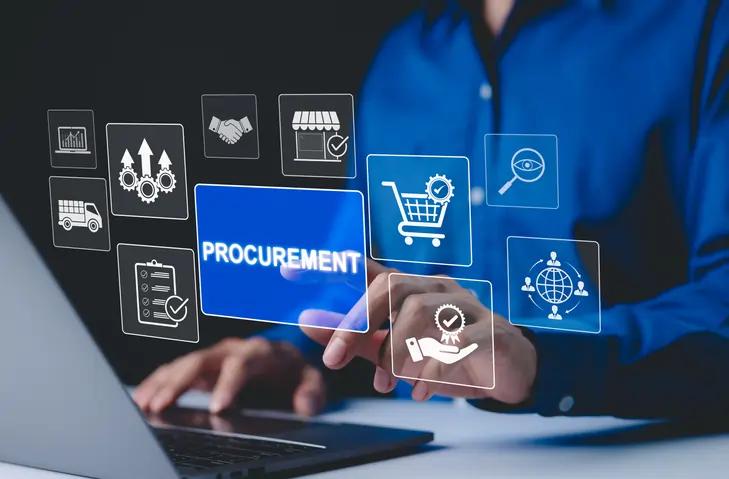
Published by Jessica Weisman-Pitts
Posted on April 22, 2025

Once viewed primarily as a cost-control function, procurement has evolved into a strategic driver of innovation and business value. No longer limited to negotiating supplier contracts or managing spend, procurement is now positioned at the heart of organizational transformation. According to The Hackett Group, nearly two-thirds of procurement executives believe emerging technologies will significantly reshape their operations in 2025, underscoring the urgency for forward-looking strategies.
This shift signals a broader redefinition of procurement’s purpose—from transactional efficiency to innovation enablement. Today’s leading procurement functions are leveraging digital tools, analytics, and supplier collaboration to unlock new sources of value, improve agility, and align more closely with enterprise-wide goals.
The Digital Revolution in Procurement
Digital transformation in procurement is reshaping the function far beyond process automation. It's redefining how organizations analyze data, manage supplier relationships, and deliver strategic outcomes. According to Kearney, by 2025, one in five procurement professionals will be data experts—a reflection of how data fluency is becoming foundational to procurement’s value proposition.
This shift is not just about streamlining workflows or digitizing paperwork; it’s about reengineering the operating model. Increasingly, procurement teams are deploying advanced analytics to inform sourcing strategies, measure supplier performance, and anticipate market dynamics. In fact, more than 70% of savings will be driven by advanced analytics and spend intelligence, rather than traditional cost-cutting measures.
As digital capabilities expand, procurement is moving from a reactive to a predictive function—enabling faster, smarter decision-making. Whether through real-time spend visibility, automated compliance checks, or scenario modeling, the digitalization of procurement is accelerating its integration into enterprise strategy.
AI-Driven Decision Making
Artificial intelligence is becoming a cornerstone of modern procurement strategy. According to the 2025 ProcureCon Chief Procurement Officer Report sponsored by Icertis, 90% of procurement leaders are either already using or planning to implement AI agents by 2025. These intelligent systems go beyond automating transactional tasks—they enable procurement teams to generate predictive insights, analyze supplier behavior, and identify innovation opportunities that traditional methods may overlook.
The impact of AI is especially significant in strategic sourcing, where algorithms can evaluate supplier data and forecast market trends with greater speed and precision. This shift supports a move away from reactive purchasing and toward proactive, data-informed decision-making.
AI is also streamlining contract lifecycle management by automating complex processes, ensuring compliance, and optimizing commercial terms. As these tools become more deeply embedded, procurement is evolving into a strategic business function capable of driving enterprise-wide value and resilience.
Supplier Collaboration: From Vendors to Innovation Partners
Supplier collaboration has become a strategic imperative in modern procurement. Since 2022, it has surged in priority for 88% of procurement leaders, reflecting a decisive shift from transactional interactions to strategic partnerships.
Today’s procurement teams are cultivating innovation ecosystems with their suppliers by implementing:
The tools supporting this transformation are also evolving. Cloud-based procurement platforms now enable seamless, data-rich communication between buyers and suppliers. These platforms facilitate everything from joint forecasting and capacity planning to real-time risk management, strengthening overall supply chain resilience.
By reimagining suppliers as long-term partners rather than vendors, procurement is unlocking new sources of value and accelerating innovation across the enterprise.
Technology as the Enabler
Technology is playing a pivotal role in reshaping the procurement landscape. According to The Hackett Group, procurement technology budgets are expected to grow by 5.6% in 2025, reflecting increased investment in automation, digital platforms, and artificial intelligence.
A significant focus of this investment is on the adoption of generative AI, which is being deployed to enhance predictive analytics, streamline decision-making, and unlock new sources of value. Organizations are also turning to integrated digital procurement suites to centralize sourcing, contract management, and supplier collaboration.Gartner
These technologies are empowering procurement teams to make faster, more informed decisions, improve risk management, and drive innovation. With digital transformation now embedded in procurement strategy, the function is evolving into a critical enabler of enterprise agility, innovation, and long-term resilience.
Blockchain for Transparency and Trust
Blockchain is becoming a core enabler of transparency and resilience in procurement. By decentralizing records and ensuring they cannot be altered, the technology enhances traceability and data integrity across supplier networks.
Procurement leaders are also leveraging smart contracts to automate contract execution. These blockchain-based agreements self-enforce terms, reduce administrative burden, and limit disputes—streamlining workflows across sourcing and payment.
As ESG compliance and responsible sourcing gain prominence, blockchain is being adopted to deliver end-to-end supply chain visibility. It allows procurement teams to verify product origins, validate supplier practices, and trace materials across their lifecycle.
The blockchain supply chain market is projected to grow from $2.04 billion in 2024 to $3.27 billion in 2025, underscoring rapid enterprise adoption.
By embedding blockchain into procurement operations, organizations are strengthening accountability, automating trust, and positioning procurement as a strategic driver of innovation and risk mitigation.
Internet of Things (IoT) Integration
The Internet of Things (IoT) is transforming procurement by providing real-time data on asset location, condition, and usage. IoT devices are delivering real-time visibility into inventory and supply chain conditions, equipping procurement teams to make faster, more accurate decisions. This capability is improving operational efficiency, enhancing responsiveness, and supporting better-informed sourcing strategies across global supply chains.
IoT sensors facilitate real-time monitoring of inventory, allowing businesses to track stock levels automatically and receive alerts when items need restocking. This capability reduces waste and ensures timely replenishment, contributing to more efficient procurement operations.
In logistics, IoT-enabled trackers in transport fleets provide live traffic updates and vehicle diagnostics, enhancing route planning and reducing delays. These connected solutions offer businesses greater control and visibility over their operations, leading to improved customer satisfaction.
The integration of IoT with technologies like artificial intelligence is further enhancing procurement intelligence. This convergence allows for predictive analytics and advanced innovation, enabling organizations to respond swiftly to disruptions and adapt to changing market demands.
By leveraging IoT technology, procurement teams can build more agile and responsive supply chains, positioning their organizations for success in an increasingly dynamic business environment.
The Sustainability Imperative
Innovation in procurement isn't just about technology—it's increasingly focused on sustainability. Procurement teams are now at the forefront of organizations' sustainability initiatives, driving innovation in:
This focus has led to the development of new supplier evaluation frameworks that integrate environmental and social performance alongside cost and delivery. As sustainable procurement becomes a formal part of ESG strategy, companies are increasingly using supplier-level sustainability metrics to guide decision-making.
With regulatory pressure and stakeholder expectations rising, procurement is playing a key role in embedding sustainability across the value chain—not just reducing environmental impact, but creating long-term business value.
Procurement as a Catalyst for Innovation
Once viewed primarily as a cost-control function, procurement has become a strategic driver of innovation and business value. Procurement is now positioned at the heart of organizational transformation, no longer limited to negotiating supplier contracts or managing spend. According to The Hackett Group, nearly two-thirds of procurement executives believe emerging technologies will significantly reshape their operations in 2025, underscoring the urgency for forward-looking strategies.
This shift signals a broader redefinition of procurement's purpose—from transactional efficiency to innovation enablement. Today's leading procurement functions are leveraging digital tools, analytics, and supplier collaboration to unlock new sources of value, improve agility, and align more closely with enterprise-wide goals.
The Digital Revolution in Procurement
Digital transformation in procurement is reshaping the function far beyond process automation. It's redefining how organizations analyze data, manage supplier relationships, and deliver strategic outcomes. According to Kearney, by 2025, one in five procurement professionals will be data experts—reflecting how data fluency is becoming foundational to procurement's value proposition.
This shift is not just about streamlining workflows or digitizing paperwork; it's about reengineering the operating model. Increasingly, procurement teams are deploying advanced analytics to inform sourcing strategies, measure supplier performance, and anticipate market dynamics. More than 70% of savings will be driven by advanced analytics and spending intelligence rather than traditional cost-cutting measures.
With the expansion of digital capabilities, procurement is transitioning from a reactive to a predictive function. This shift enables faster, more intelligent decision-making. Whether through real-time spend visibility, automated compliance checks, or scenario modeling, the digitalization of procurement is accelerating its integration into enterprise strategy, providing a strategic foresight that was previously unattainable.
AI-Driven Decision Making
Artificial intelligence is becoming a cornerstone of modern procurement strategy. According to the 2025 ProcureCon Chief Procurement Officer Report sponsored by Icertis, 90% of procurement leaders are either already using or planning to implement AI agents by 2025. These intelligent systems go beyond automating transactional tasks—they enable procurement teams to generate predictive insights, analyze supplier behavior, and identify innovation opportunities that traditional methods may overlook.
The impact of AI is especially significant in strategic sourcing, where algorithms can evaluate supplier data and forecast market trends with greater speed and precision. This shift supports a move away from reactive purchasing and toward proactive, data-informed decision-making.
AI also streamlines contract lifecycle management by automating complex processes, ensuring compliance, and optimizing commercial terms. As these tools become more deeply embedded, procurement is evolving into a strategic business function capable of driving enterprise-wide value and resilience.
Supplier Collaboration: From Vendors to Innovation Partners
Supplier collaboration has become a strategic imperative in modern procurement. Since 2022, it has surged in priority for 88% of procurement leaders, reflecting a decisive shift from transactional interactions to strategic partnerships.
Today's procurement teams are cultivating innovation ecosystems with their suppliers by implementing the following:
The tools supporting this transformation are also evolving. Cloud-based procurement platforms now enable seamless, data-rich communication between buyers and suppliers. These platforms facilitate everything from joint forecasting and capacity planning to real-time risk management, strengthening overall supply chain resilience.
Procurement is unlocking new sources of value and accelerating innovation across the enterprise by reimagining suppliers as long-term partners rather than vendors.
Technology as the Enabler
Technology is pivotal in reshaping the procurement landscape. According to The Hackett Group, procurement technology budgets are expected to grow by 5.6% in 2025, reflecting increased investment in automation, digital platforms, and artificial intelligence.
A significant focus of this investment is on adopting generative AI, which is deployed to enhance predictive analytics, streamline decision-making, and unlock new sources of value. Organizations also use integrated digital procurement suites to centralize sourcing, contract management, and supplier collaboration.Gartner
These technologies empower procurement teams to make faster, more informed decisions, improve risk management, and drive innovation. With digital transformation now embedded in procurement strategy, the function is evolving into a critical enabler of enterprise agility, innovation, and long-term resilience.
Blockchain for Transparency and Trust
Blockchain is becoming a core enabler of transparency and resilience in procurement. By decentralizing records and ensuring they cannot be altered, the technology enhances traceability and data integrity across supplier networks.
Procurement leaders are also leveraging smart contracts to automate contract execution. These blockchain-based agreements self-enforce terms, reduce administrative burden, and limit disputes—streamlining workflows across sourcing and payment.
As ESG compliance and responsible sourcing gain prominence, blockchain is being adopted to deliver end-to-end supply chain visibility. It allows procurement teams to verify product origins, validate supplier practices, and trace materials across their lifecycle.
The blockchain supply chain market is projected to grow from $2.04 billion in 2024 to $3.27 billion in 2025, underscoring rapid enterprise adoption.
By embedding blockchain into procurement operations, organizations strengthen accountability, automate trust, and position procurement as a strategic driver of innovation and risk mitigation.
Internet of Things (IoT) Integration
The Internet of Things (IoT) transforms procurement by providing real-time data on asset location, condition, and usage. IoT devices deliver real-time visibility into inventory and supply chain conditions, equipping procurement teams to make more accurate decisions. This capability improves operational efficiency, enhances responsiveness, and supports better-informed sourcing strategies across global supply chains.
IoT sensors facilitate real-time inventory monitoring, allowing businesses to track stock levels automatically and receive alerts when items need restocking. This capability reduces waste and ensures timely replenishment, contributing to more efficient procurement operations.
In logistics, IoT-enabled trackers in transport fleets provide live traffic updates and vehicle diagnostics, enhancing route planning and reducing delays. These connected solutions offer businesses greater control and visibility over their operations, improving customer satisfaction.
Integrating IoT with technologies like artificial intelligence further enhances procurement intelligence. This convergence allows for predictive analytics and advanced innovation, enabling organizations to respond swiftly to disruptions and adapt to changing market demands.
By leveraging IoT technology, procurement teams can build more agile and responsive supply chains, positioning their organizations for success in an increasingly dynamic business environment.
The Sustainability Imperative
Innovation in procurement isn't just about technology—it's increasingly focused on sustainability. Procurement teams are now at the forefront of organizations' sustainability initiatives, driving innovation in:
This focus has led to the development of new supplier evaluation frameworks integrating environmental and social performance alongside cost and delivery. As sustainable procurement becomes a formal part of ESG strategy, companies increasingly use supplier-level sustainability metrics to guide decision-making.
With regulatory pressure and stakeholder expectations rising, procurement plays a key role in embedding sustainability across the value chain—not just reducing environmental impact but creating long-term business value.
Risk Management and Resilience
The events of recent years have highlighted the importance of supply chain resilience. Procurement teams are now leveraging advanced analytics and AI to:
Skills and Talent Evolution
The changing face of procurement has created a demand for new skill sets. Today's procurement professionals need to be:
Organizations are investing heavily in reskilling their procurement teams, recognizing that human expertise, augmented by technology, is crucial for driving innovation.
The Road Ahead
As we move through 2025, procurement's role as an innovation catalyst will continue to evolve. The digital revolution in procurement is well underway, but the pace and scope of transformation are reaching new heights.
Success in this new era requires procurement teams to:
Procurement's transformation from a cost center to an innovation catalyst represents one of the most significant shifts in business operations in recent years. By leveraging digital tools, fostering collaborative supplier relationships, and embracing sustainability, procurement teams are not just supporting innovation—they're driving it.
As organizations navigate an increasingly complex business environment, the procurement function's role in fostering innovation will become even more crucial. The successful procurement teams will be those that can effectively balance technology adoption with human expertise, strategic thinking with operational excellence, and cost control with value creation.
The future of procurement is not just about buying better—it's about innovating smarter. As we continue through 2025, procurement professionals have the opportunity to lead their organizations into a more innovative, sustainable, and resilient future.
Explore more articles in the Business category
